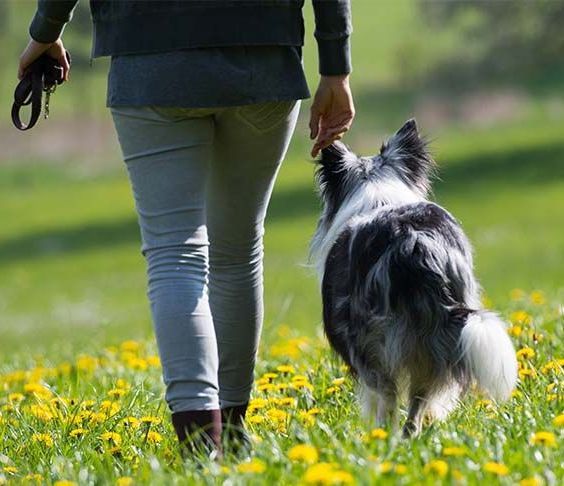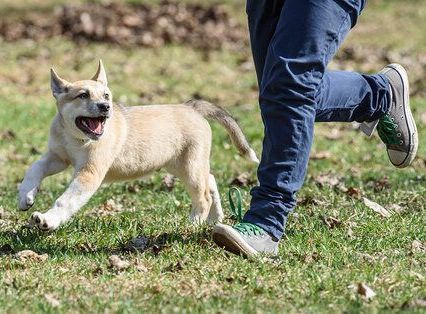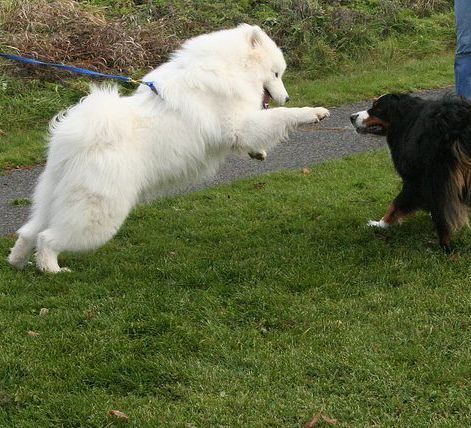How to Successfully Teach
Off-Leash Corpus Christi Dog Training
Positive Reinforcement in Dog Obedience Training
Off-leash Corpus Christi dog training is a useful skill that increases your dog's freedom and strengthens the trust between you. When properly executed, it allows a dog to roam and play freely while responding to commands, ensuring safety and control in various environments; however, achieving successful off-leash training requires patience, consistency, and a deep understanding of your dog's behavior.
Before embarking on off-leash training, laying a solid foundation with basic obedience commands such as sit, stay, come, and heel is essential- these fundamental commands form the building blocks for off-leash training, establishing trust and communication between you and your furry companion. It can even aid in aggressive dog training by removing the stimulus that makes them feel strained.
Start off-leash training in a secure, enclosed area devoid of distractions. Begin by practicing recall commands, calling your dog's name followed by the "come" command while rewarding them with treats or praise upon compliance. Gradually increase the distance between you and your dog, reinforcing the recall command consistently.
Speak With A Dog
Training Expert
Speak With A Dog Training Expert
Thank you for contacting us!
We will contact you shortly!
Please try again later.
Positive Reinforcement in Dog Obedience Training
Off-leash Corpus Christi dog training is a useful skill that increases your dog's freedom and strengthens the trust between you. When properly executed, it allows a dog to roam and play freely while responding to commands, ensuring safety and control in various environments; however, achieving successful off-leash training requires patience, consistency, and a deep understanding of your dog's behavior.
Before embarking on off-leash training, laying a solid foundation with basic obedience commands such as
sit, stay, come, and heel is essential- these fundamental commands form the building blocks for off-leash training, establishing trust and communication between you and your furry companion. It can even aid in aggressive dog training by removing the stimulus that makes them feel strained.
Speak With A Dog
Training Expert
Speak With A Dog Training Expert
Thank you for contacting us!
We will contact you shortly!
Please try again later.
Start off-leash training in a secure, enclosed area devoid of distractions. Begin by practicing recall commands, calling your dog's name followed by the "come" command while rewarding them with treats or praise upon compliance. Gradually increase the distance between you and your dog, reinforcing the recall command consistently.
Consistency is key: dogs thrive on routine and repetition, so reinforce the commands in various environments. Introduce distractions gradually, such as other animals or people, to test your dog's responsiveness to commands amidst potential diversions. Using positive reinforcement techniques by rewarding desired behaviors with treats, praise, or playtime will make your dog more likely to repeat them and is much more effective than punishment.
Consistency in Dog Obedience Training
Make sure you understand your pet's body language- which consists of signals, posture, and demeanor- when choosing to pursue this type of training, both to avoid potential disasters around other animals or humans and to gauge their comfort level and receptiveness during training sessions. A relaxed and attentive posture indicates receptiveness to commands, while signs of stress or anxiety may suggest the need to adjust training techniques or reduce distractions.
Regular practice and gradual progression are the secret to successful off-leash training. Practice sessions should be short, frequent, and enjoyable, preventing boredom or fatigue in your dog. As your pet becomes more proficient, gradually transition to different environments, introducing controlled off-leash scenarios in parks or quiet outdoor spaces.
Taking safety measures in advance is absolutely necessary once you decide to train off-leash. Ensure your dog is microchipped and wearing a collar with identification tags. Additionally, consider using a long-line leash or harness in open areas in the beginning to maintain control while providing the illusion of freedom. Always prioritize your dog's safety by assessing potential risks in the training environment.
Consistency is key: dogs thrive on routine and repetition, so reinforce the commands in various environments. Introduce distractions gradually, such as other animals or people, to test your dog's responsiveness to commands amidst potential diversions. Using positive reinforcement techniques by rewarding desired behaviors with treats, praise, or playtime will make your dog more likely to repeat them and is much more effective than punishment.
Consistency During Dog Obedience Training
Make sure you understand your pet's body language- which consists of signals, posture, and demeanor- when choosing to pursue this type of training, both to avoid potential disasters around other animals or humans and to gauge their comfort level and receptiveness during training sessions. A relaxed and attentive posture indicates receptiveness to commands, while signs of stress or anxiety may suggest the need to adjust training techniques or reduce distractions.
Regular practice and gradual progression are the secret to successful off-leash training. Practice sessions should be short, frequent, and enjoyable, preventing boredom or fatigue in your dog. As your pet becomes more proficient, gradually transition to different environments, introducing controlled off-leash scenarios in parks or quiet outdoor spaces.
Taking safety measures in advance is absolutely necessary once you decide to train off-leash. Ensure your dog is microchipped and wearing a collar with identification tags. Additionally, consider using a long-line leash or harness in open areas in the beginning to maintain control while providing the illusion of freedom. Always prioritize your dog's safety by assessing potential risks in the training environment.
Seek professional guidance if you encounter challenges or if your dog exhibits behavior issues during training. A professional dog trainer can provide tailored guidance, addressing specific concerns and employing effective training techniques suited to your dog's temperament and behavior.
Remember, off-leash training is an ongoing process that requires patience; celebrate small victories and progress, acknowledging your dog's efforts and improvements throughout the training journey. In the end, this type of training will cultivate freedom and trust between you and your dog and ensure safety and control in different settings. You can successfully train your furry companion to enjoy the freedom of off-leash adventures while responding to commands reliably.
Seek professional guidance if you encounter challenges or if your dog exhibits behavior issues during training. A professional dog trainer can provide tailored guidance, addressing specific concerns and employing effective training techniques suited to your dog's temperament and behavior.
Remember, off-leash training is an ongoing process that requires patience; celebrate small victories and progress, acknowledging your dog's efforts and improvements throughout the training journey. In the end, this type of training will cultivate freedom and trust between you and your dog and ensure safety and control in different settings. You can successfully train your furry companion to enjoy the freedom of off-leash adventures while responding to commands reliably.



